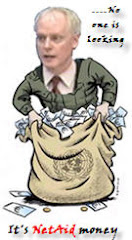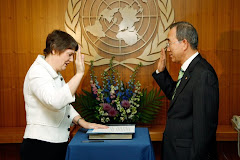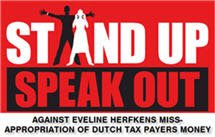
Clean Development Mechanism (CDM) projects will not ultimately deliver, so the United Nations Framework Convention on Climate Change (UNFCCC) CDM Executive Board is looking at alternative mechanisms to implement beyond 2012, said Martin Hession, who is an Executive Board member and was on the UK negotiating team at Copenhagen.
"We need to find an alternative system that functions equitably, more efficiently and effectively," said Hession at an industry function on Tuesday. "The US isn't loud on the CDM project idea and I think it is time to look at other mechanisms that we can put in place."
He said, however, that he did see a future for CDM up until 2020.
Under the CDM, developed countries can invest in carbon reduction projects in developing countries, gaining Certified Emissions Reductions (CERs), which can be traded in the European Union's Emission Trading Scheme.
Hession also revealed that at Copenhagen the EU and US were in agreement that a transition from CDMs would have to take place in 2020, by implementing new "instruments". However, he declined to detail what these might be.
Meanwhile, Lex de Jonge, another member of the Executive Board and head of the CDM unit at the Dutch ministry of environment, outlined some changes to CDM procedures under discussion, including an assessment of designated operational entities, further simplified approaches to small projects and increased training. He warned that discussing and implementing changes will be a lengthy process.
"CDMs are successful, so much so that we are suffering from it," said de Jonge. "Everyone expects an overhaul but they have to lower expectations because we have a long list to tackle and it will take time."
On Tuesday John Kilani, director of the sustainable development mechanisms programme at the UNFCCC told Energy Risk the Executive Board was set to announce changes to the CDM technical framework, in a bid to better streamline the development of CDM projects. One of the proposals is to increase the time project developers have to respond to queries on their projects.
One of the biggest questions in the market is whether Chinese CDM-generated CERs will be allowed to be imported in Phase III post-2012. The uncertainty over this is already leading some investors to move away from China in favour of other regions.
When Hession was asked whether there was a timeframe for more clarity on this subject, he said: "I ask the European Commission every day. As far as I know, there is no concrete proposal yet."
An in-depth article on China's CDM outlook and the possibility of a future two-tier carbon trading system will appear in the March issue of Energy Risk and online atwww.energyrisk.com or www.risk.net from the first week of March.
















































No comments:
Post a Comment